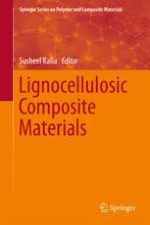2018 | OriginalPaper | Buchkapitel
Pineapple Leaf Fiber: From Waste to High-Performance Green Reinforcement for Plastics and Rubbers
verfasst von : Nanthaya Kengkhetkit, Thapanee Wongpreedee, Taweechai Amornsakchai
Erschienen in: Lignocellulosic Composite Materials
Aktivieren Sie unsere intelligente Suche, um passende Fachinhalte oder Patente zu finden.
Wählen Sie Textabschnitte aus um mit Künstlicher Intelligenz passenden Patente zu finden. powered by
Markieren Sie Textabschnitte, um KI-gestützt weitere passende Inhalte zu finden. powered by
